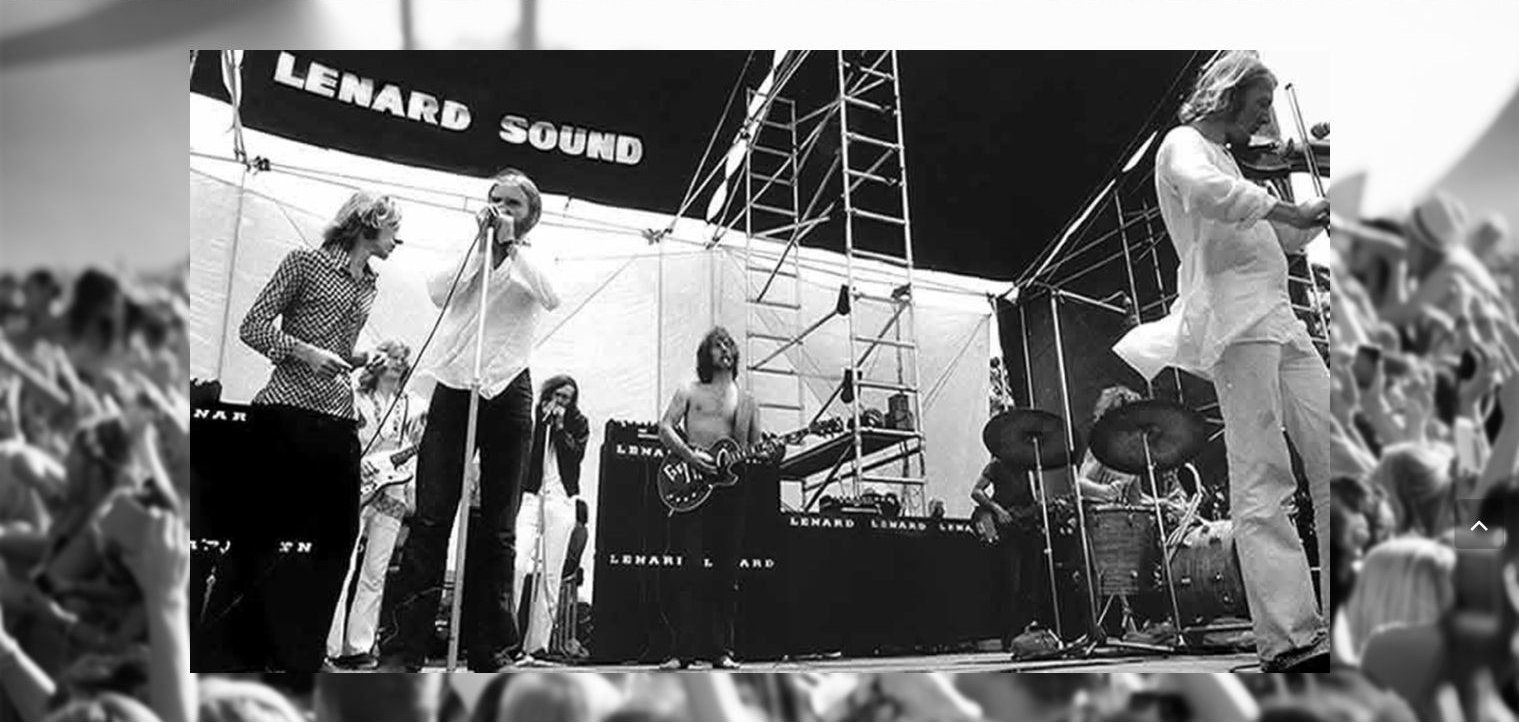
There have been questions in recent years as to the history of Lenard Audio. I hope this page will answer these questions along with providing an entertaining perspective of the history of the Australian rock industry.
Lenard started at the most exciting time in rock history 1966 -1972. Prior to this period bands only used small amps and simple lighting, often with only a single spot. Little note is taken of the roll technology plays in transforming social trends. History usually refers to social figures or artists that were present, rather than the technology that enables things to happen.
Lenard first existed when instruments were the main drive and vocal PA's were separate. Then came the transition period of the PA, which began to dominate as the main system, with both instruments and voices adapted within it. Many excuses are made for the decline of live performance today, but little is said of the misuse of technology - a compressed sound devoid of dynamic expression, fidelity and realism. The technical direction Lenard was taking envisaged something very different to where the industry is today.
Lenard created products that were revolutionary for their time, supplying rock festivals and most concerts in Australia. Almost every band had Lenard amplifiers. This was the era when performance was everything. Brand Image had little relevance; and it was another 10 years before global corporate Brand Image would control world markets, music and technology. In Australia the company had a virtual monopoly and a vision of where it was going. Lenard products outperformed their overseas competitors and were more expensive. Many UK and US bands, when touring Australia, took these amps back with them. Plans were underway for a global push to Los Angeles and London. In its final year Lenard was developing large-scale, self-powered and fully active PA systems for concerts.
At that time many of the senior management of today's sound and lighting companies were mostly of school age. They aspired to be involved in what appeared to be an exciting industry that was dominated by Lenard. By the time they finished school, both the visionary movements that were meant to transform the world and the original Lenard Company were gone. The world they entered was ridden with drugs and unscrupulous entrepreneurs driven by the dollar. They had to find their own path with no vision and little understanding of what had preceded them. But what happened to Lenard that resulted in a decision to scuttle the company?
I came from a different place and way of being, growing up in the northern part of Australia in the early 50s. Billeted between families in mining towns, aboriginal communities and boarding schools. My escape was a fascination with radio that enabled me to listen to music from anywhere in the world. I gravitated to migrant German electronic engineers, learning anything I could about technology.
Working through high school on the Queensland Gold Coast, my first job was for Lee Gordon, setting up and operating a sound lounge at Coolangatta. Lee Gordon was one of Australia's most colourful music entrepreneurs and toured artists such as Frank Sinatra and Shirley Bassey. Lee saw big concerts as the way of the future and longed for technology that would enable artists to be heard with crystal clarity - for which he was prepared to provide unlimited budgets. Sadly, Lee Gordon died shortly after.
At the time I intended to move to the US but an opportunity opened in Brisbane and I became apprenticed to Tony Troughton. Tony had been a senior engineer of electro-acoustics with Western Electric UK, and was involved in pioneering multi-track recording and high-powered amplification of active systems for cinemas and auditoriums (including the Lester Square Theatre of London). The poor health of one of his sons brought Tony to Brisbane, where in a small workshop he continued to make beautifully handcrafted amplifiers, mixers and multiple track recorders.
This was the era of Elvis, The Shadows, The Everly Brothers, Buddy Holly, Bobby Rydell, Chubby Checker, Johnny O'Keefe, the Twist and surf music like Bombora.
Brisbane and the Gold Coast were more active than other Australian cities because of the climate. The dance venues were huge and my involvement with bands increased amplifier sales. 'Vase' amplifiers were the largest and most powerful at that time. 'Procession' was Australia's first rehearsed and disciplined high-energy, touring production band. Outfitted with Vase amplification their performances set the energy standard for rock music and changed the industry forever.
In 1964 The Beatles toured Australia using house PAs and 30-Watt Vox amplifiers. The screaming audience completely drowned them out. To the local bands this boosted their morale, as the equipment they were using proved to be vastly superior.
Tony was not interested in up-scaling production: he epitomized the brilliant, old school English engineer, aloof and proud, driven by perfection and a dislike of lazy apprentices. Moreover he resented being compelled to leave England. He refused to make amplifiers for bands whose music he disliked - especially the high-energy blues music of Lobby Lloyd and the Purple Hearts - this drove a wedge between them.
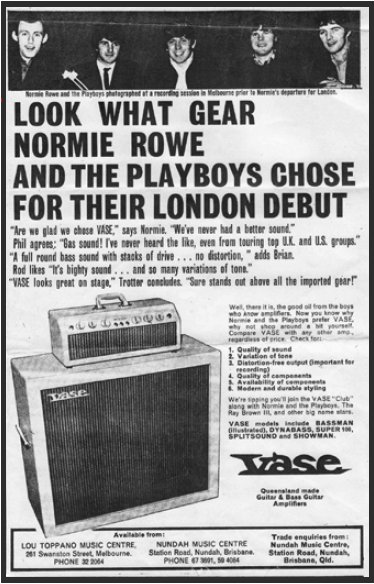
Similar stories were told of early guitar amp manufacturers in the US and UK. Many engineers and amp manufacturers, at that time, were from the pre 2nd world war generation, with a high sense of morality, identified with ballad, country and religious music. They were horrified by the anti-religious, anti-war, sex crazed, drug driven, rock musos of the 60s diving their amps at full power into hard over-drive. Many manufacturers of renowned brands, throughout the world, reacted by making warranties void if their amps were driven at full power. Others threatened to cut off distribution to music retailers who sold their amps to musos that played "Music of the Devil." This historical contradiction has since been rewritten by marketing spin doctors to fit mythical beliefs that brilliant designers created these amps for exactly what 'rock musos' wanted.
Lobby Lloyd and the Purple Hearts had become the dominant band in Brisbane, and against Tony's wishes I supported them through a young English technician, Vince Lipton. Lobby's band moved to Melbourne and encouraged Vince and me to do the same. Then 18, I still intended moving to the US but Kennedy's assassination shifted everything and all were deeply affected by events. The Vietnam War and conscription put an end to my plans for the US, and I moved to Sydney instead.
On arriving in Sydney I found the doors shut. Retailers and traditional amp manufacturers were territorial. They imported or copied overseas products and had no interest in advancing the technology or supplying what bands wanted. It was simply a money-making business to them.
I connected with Bruce Brown in Brookvale, who serviced equipment for bands. We formed an arrangement in which the service was split and I received space to make amplifiers. Bruce had a passion for recording and formed a partnership with Duncan McGuire. They set up a small recording studio consisting of a 4-track machine made from two stereo heads joined together, a 1950s EMI BT4 mastering machine, and a homemade mixing console. Bruce had an excellent talent for improvising.
The opening of 'Pro-sound Studio' coincided with the release of 'Sergeant Peppers' and every pot-smoking muso was there. You could get high just driving down Condamine Street. Bruce did not tolerate drug use and that led to conflicts. His partnership with Duncan broke up. Bruce went on to ATA and Albert studios and became one of the most successful recording engineers in Australia.
I formed a close friendship with Duncan who at the time was also the bass player with Doug Parkinson and the Questions. This relationship enabled me to finalise the designs. Excellent musicianship and the high performance of the custom made amps enabled The Questions to become the number one band in Sydney.
I rented a factory in North Sydney and set up to manufacture amps. The first band to be fully outfitted with the new Lenard amplifiers was Elliott Gordon Union. The number of venues and bands exploded, orders flooded in, and within a year the company was in full production with a staff of 20.
Speakers became the most important concern, as it was not possible to import the quantities required. Victor Kay the senior engineer of the speaker division of AWA, agreed to produce high quality high-powered speakers, originally called Lafayette, the name later changed to Etone when his son Nick took over.
This was the first time an amp manufacturer took an integrated approach, to give bands the power, reliability and performance they had wished for. Most bands became fully outfitted with the new Lenard amplifiers, bass, guitar, keyboards and PA. This also had a direct effect on how musicians played, beginning the era of high energy blues.

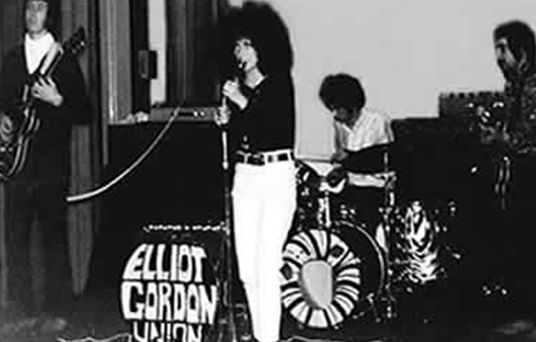
This also was the era of groupies and super roadies. Ray Arnold and John Sweeney could carry a Hammond organ and Leslie speaker single-handed, up a flight of stairs (only Schwarzenegger and special effects could achieve this today). Bands often did 3 gigs a night, travelling in unregistered Kombis or transit vans; this restricted PAs to two 4 x 12in cell, similar to the size of instrument amps. Few bands operated as an efficient business, making the horn-loaded higher performing systems that I was developing were economically out of reach.
PA's were at an impasse. I tried to get the industry to become PA-wise, believing that venues should assume responsibility for their sound. For a PA to be effective it had to be at least four times the scale of the instrument amps and fully active to achieve fidelity. Permanently installed on lease was the correct option but venues refused.

The anti Vietnam war movement took hold. Woodstock, Dylan, Hendrix, and in Australia, Billy Thorpe and the Aztecs, Jeff St John, Tully. The Ourimbah festival was the first in Australia following on from Woodstock.
Vince Lipton joined Lenard as Production Manager, allowing me time to develop PAs for concerts and festivals. The development to set up large horn-loaded active PAs for concerts was well under way but the economics of supplying sound was not viable. Often done for no cost, the best that could be achieved was to cover transport and insurance; Lenard staff donated their time for the festivals. These days it's hard to imagine how resistant entrepreneurs and venues were to spending money on sound. Typically there were large budgets for lighting and if something was left over it was grudgingly spent on sound, and then with a concerted effort to avoid paying.
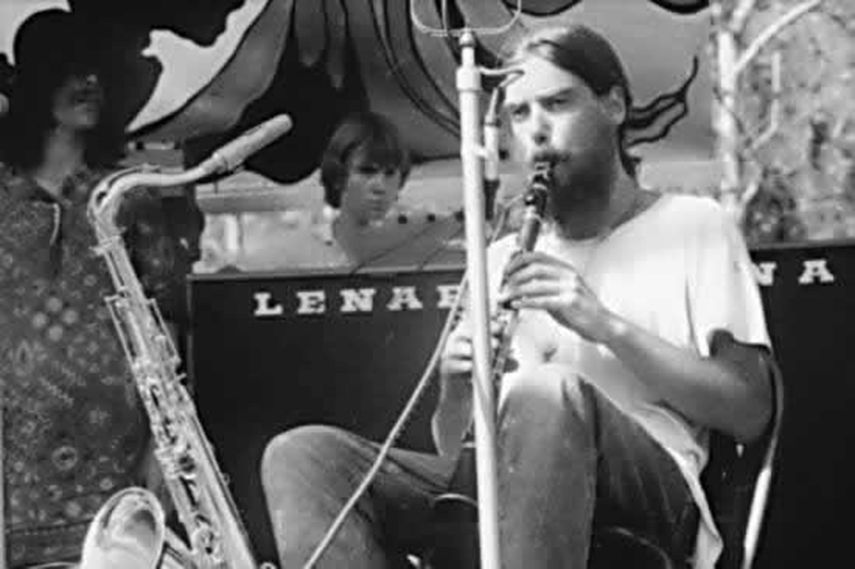
Strauss amplifiers in Melbourne by Gary Nessel and John Woodhead were on a smaller scale and experiencing the same difficulties. By hindsight it was evident that the two companies which were complementing each other should have combined. This single oversight was to change the course of their history.
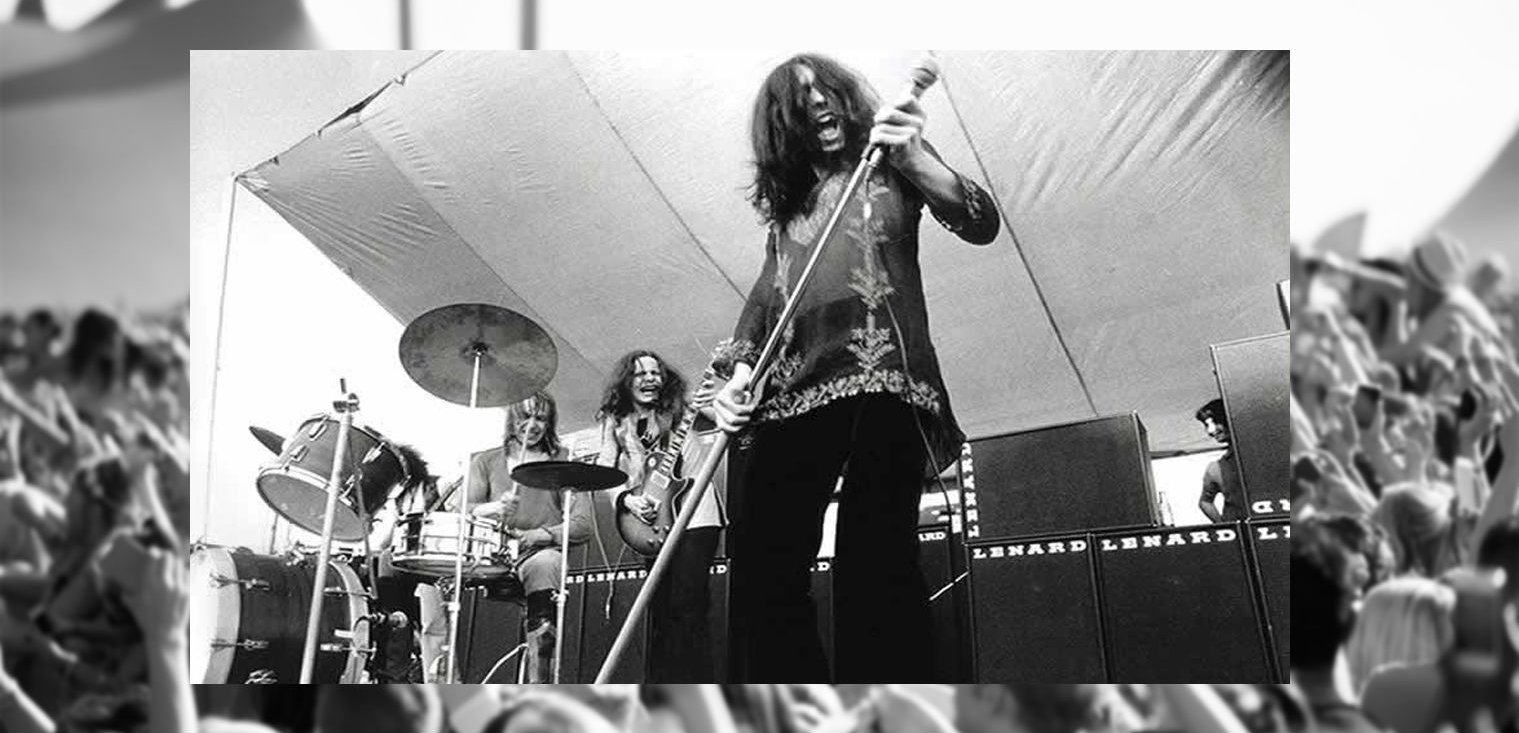
At concerts a tactical approach developed was for amps to be slaved to form a large active PA, with the amps' equalization forming the crossover points. The quad and double 15" boxes were stacked into groups. 20 x 200-watt amps per side were used to create the 2- and 3-way active systems. The stage was walled with Lenard amps slaved into groups of 4 to 8 quad boxes for guitars and keyboards, and four large 4 x 15" cabinets driven by 400watt amps for bass. The on-stage energy was enormous, often bigger than concerts of today.
LSD Fog by Roger Foley created spectacular light shows at the concerts. The exceptional teamwork of Lenard sound and LSD Fog lighting, gave both companies a reputation for professionalism and ingenuity.
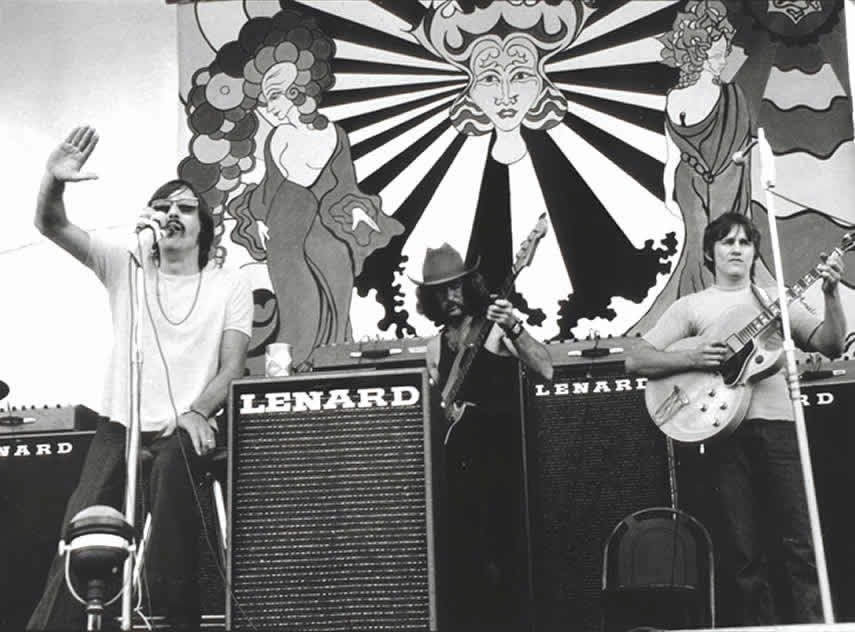
The business objective was to break even, and a skilful marketing approach employed, after each concert or festival, to distribute the amps amongst country retailers throughout Australia on consignment discount. As a sales incentive each amp had a signature and a photo of a band that had used it. Many overseas bands took the amps back with them, and Vince and I formulated plans to expand to the US and UK and take on Fender and Marshall for top position, following up with high-powered active PAs.
The turning point that decided the fate of Lenard was in hindsight unavoidable. My youth and legal naivety made me vulnerable. It began with a series of robberies, one cleaned out three month's production before a festival. This was a major setback that required extended credit from suppliers and extra commitment from staff. A lawyer, who had done contracts for festivals, saw an opportunity, and put forward a proposal to incorporate the business and promise capital for expansion.
The paperwork I signed resulted in the Lawyer owning the company. The deception resulted in all stock being transferred to the new company owner, leaving me responsible for the debt. Outraged and in shock, I tried to take legal recourse, but none was possible. The situation put me in the humiliating position of bankruptcy. The remaining staff, also in shock, informed me of their intention to scuttle all future festival contracts, hoping I could quickly re-formulate the business. But without the necessary legal skills, this also was not possible.
This part of the story is shared by many others who came to similar fates, at the hands of legal predators. In the world today, this practice has become accepted corporate behaviour.
Lenard's disappearance left a gap and many companies entered the sound and lighting business fighting for a piece of the action. These businesses imported or copied overseas products, many went bust but others arose to take their place and repeat the cycle. The industry became chaotic.
The development of large-scale active concert PA systems and other products, which had been left incomplete, got underway again when Michael Dixon, Rod Elliott and Richard Priddle joined me to continue the research.
The latest fibreglass technology from the surfing industry was utilised in the development of the composite horn-loaded molded cabinets. This enabled trapezoid designs to be created and were virtually indestructible. Called line-array, this implementation is similar to how concert systems are constructed today.
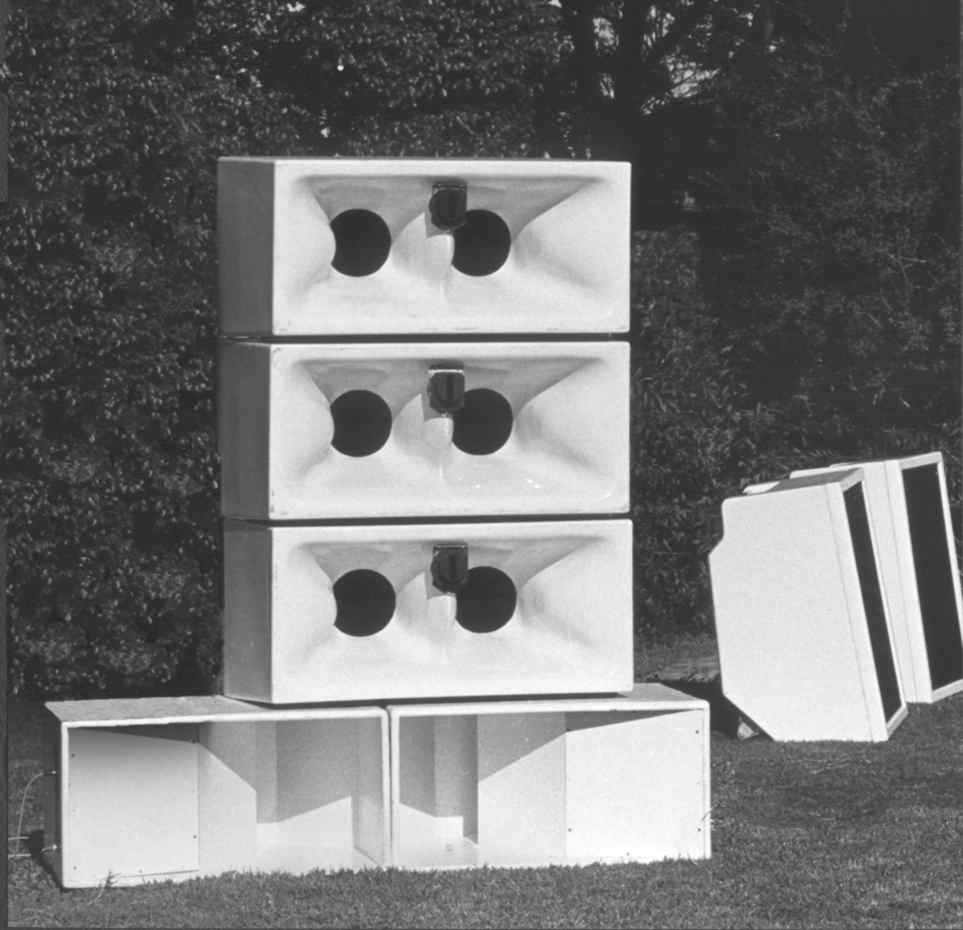
By 1978 we had developed large-scale 4-way active self powered designs that gave startling clarity and realism. The dream that Lee Gordon had wished for had evolved.
Music produced by people such as Santana, Eagles, Yes and the Motown label, required a high level of skill, which very few bands possessed. The majority of the new bands were unprofessional and image-driven, copying trends in the styles of Black Sabbath, Sex Pistols, Led Zeppelin etc. Having extravagant wastage with an entourage of roadies and equipment-laden Pantec trucks. Almost every cent went on a smorgasbord of drugs and hiring PAs consisting of ugly black boxes that produced harsh, distorted, unintelligible sound. Roadie sound engineers, often stoned, mixed from the middle of audiences with a desk light on themselves.
Loud harsh distorted sound became and still remains the symbol of live music. The world had changed. The era from the mid 60s to early 70s, which created free love and the greatest diversity of music ever known, had come to a close. The music industry became dominated by commercial interest, making diversity and creativity the first casualties. The new generations only respond to what is marketed.
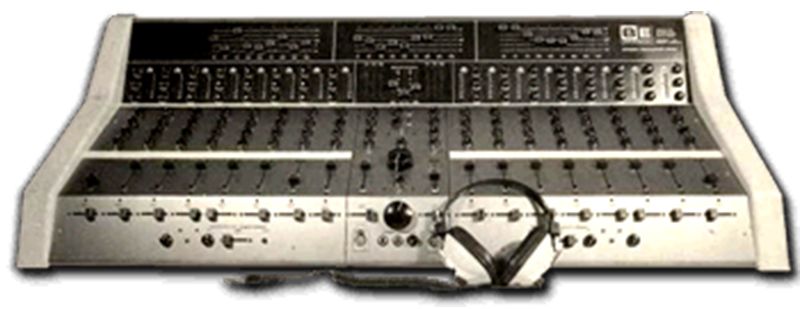
A collective belief evolved that it was now too difficult to innovate new designs in what had become a technically illiterate industry controlled by marketing. Other overseas engineering teams doing similar research came to the same conclusion. The emerging IT industry now consumed the best engineering people. Rod Elliot later joined a telecommunications company as a senior engineer, Michael Dixon went on to industrial design, and Richard Priddle went on to designing studios and consulting only to what the industry wanted.
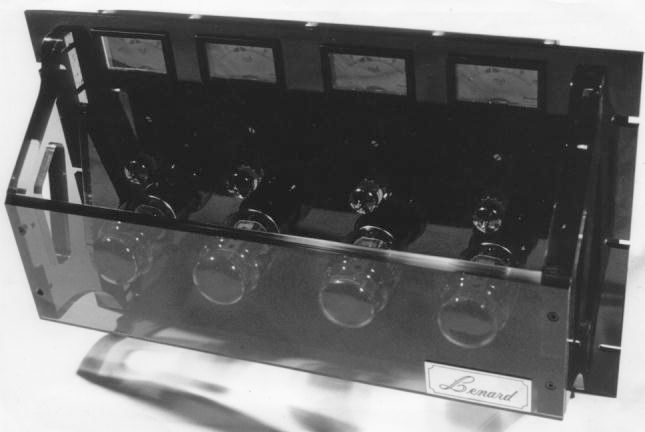
Despite being separated the Lenard design team continued to develop many outstanding products. Below is an example of a revolutionary design of a valve monitoring amplifier.
It was clearly evident that change is not possible unless there is proper education. In 1975 I joined a committee at the ABC (Australian Broadcasting Commission) to help form the radio station 2JJ. This station was to be free of commercial and political constraint, representing the young generation. My hope was to establish an educational division as part of the new radio station, for both recording and live production. The aim was to ensure the highest standard of excellence, with industry support, so the best students would be employed within it. Unfortunately trying to establish an educational division within the Government owned ABC would prove to be a difficult task.

In 1977 Tom Misner approached me to form a recording school. Tom was in the cleaning contract business and had no background in the recording or music industry, but had a desire, like many young people, to own a recording studio. An interview on Sydney radio 2JJ with me on the Bob Hudson morning show announced the launch of the 'School of Audio Engineering', resulting in an enrolment of 60 students. The recording industry is very small and only a few students would be able to be employed within it. My plan was for the training to include electives in electronics and IT. The objective was for the school to have a major focus on students gaining good employment.
But Tom believed that to be successful and make a lot of money, an audio school need only provide a minimal simplistic level of training. Later this proved correct by the significant number of students who only wanted to twiddle knobs and bypass a thorough education. Tom and I parted on this philosophical point of divergence. Further details of this part of the Lenard history story is understandably more complex and can be provided by request.

Rod Elliott and I moved on and continued to set up legitimate education in Electronics IT and Telecommunication with the Australian Technical Training Centre. The most rewarding experience was establishing technical re-training programs with the Federal Government throughout Australia. These re-training programs enabled thousands of people to be re-employed, and became the focus of my life for the next fourteen years.
During the 1990s my son and daughters attempted to convince me to fully return to the audio industry, as they believed that poor standards and sound quality are clearly noticeable to a large percentage of their generation, especially now that digital technology is available. My son Chris believed the cinema industry should be first, because changes here flow on to the other areas. Later Chris called from overseas attempting to sway me. It was the last time I would speak to him: a week later, television and newspapers carried the story of Chris and four of his friends being killed in an accident.
Events in our lives often put us to the test and bring greater awareness. Truths we discover, and fail to fight for, can be lost. If we make the effort we can make a difference, even if only in a minor way. Perhaps had I initially maintained control of Lenard, or had stayed and fought for S.A.E. the industry may have taken a different course. This we will never know.
The Lenard team is continuing, and with my daughter, we are developing many projects, including the largest sound system for cinema ever created, and attracting some of the best young engineers. Our web site will always include an ongoing education component.